Review: Blue Cat Audio Late Replies
Delay effects tend to get overlooked by many producers, but the right one can add a significant aural expansion to many sounds. We take a look a unique, flexible delay in the shape of Late Replies…
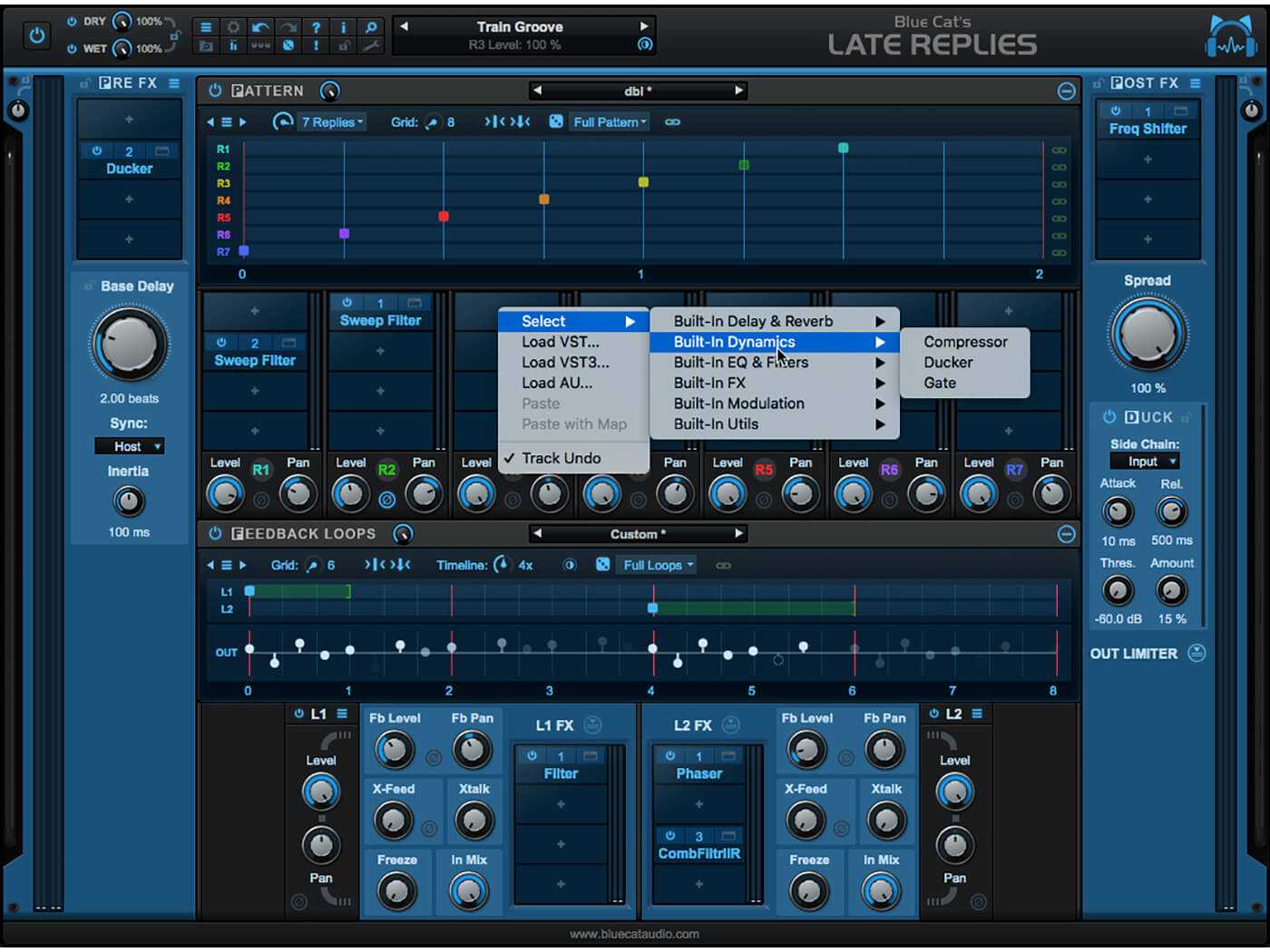

Price €129/$129
Contact Blue Cat Audio
It’s very easy to take for granted some of the tools we use as producers and sound engineers. Nowhere is this more true than with delay effects. Rarely seen as the most exciting or glamorous of effects, it nonetheless lies at the heart of a number of different effect types, can be a fundamental part of some guitarist’s signature tones and sounds great when used well. In the studio, however, delay is often seen as more of an embellishment than as something creative or expressive in its own right, but the more you look beyond the basic mono, stereo and ping-pong delays that came bundled with your DAW, the more you discover that there’s much more to delay than just creating echoes.
A perfect example of this could be Blue Cat Audio’s Late Replies, a delay plug-in for VST, VST3, AU and AAX platforms, which has recently been updated to v1.4. Its multi-tap delay credentials immediately identify Late Replies as being more flexible than basic delays and it adds to this promise with two parallel feedback loops, integrated ducking and limiting, and – what really catches the eye – the ability to insert additional plug-ins at practically any point in the processor’s signal chain.
Processing modules
Multi-tap delays can be quite complicated to work with and so with up to eight taps – or ‘replies’, as Blue Cat refers to them – in total, along with all of the other advanced capabilities, Late Replies’ user interface has a lot to cram in. The plug-in’s panel is indeed quite large and while it is a bit overwhelming at first glance, it doesn’t feel cluttered or claustrophobic, and includes some very intuitive readouts. The panel’s frame follows Blue Cat’s standard layout, common to all of its plug-ins, with a cluster of buttons for accessing various top-level settings and modes and a preset-management area that shows the current preset’s name (there’s a healthy dose of presets to work with, too).
The main body of the control panel is laid out to reflect the signal flow of the plug-in. The input and output sections are housed on the left and right sides of the window (respectively), while the delay-processing chain runs from top to bottom within the central area of the window. That chain starts with the Pattern processor, which is where the replies are configured.
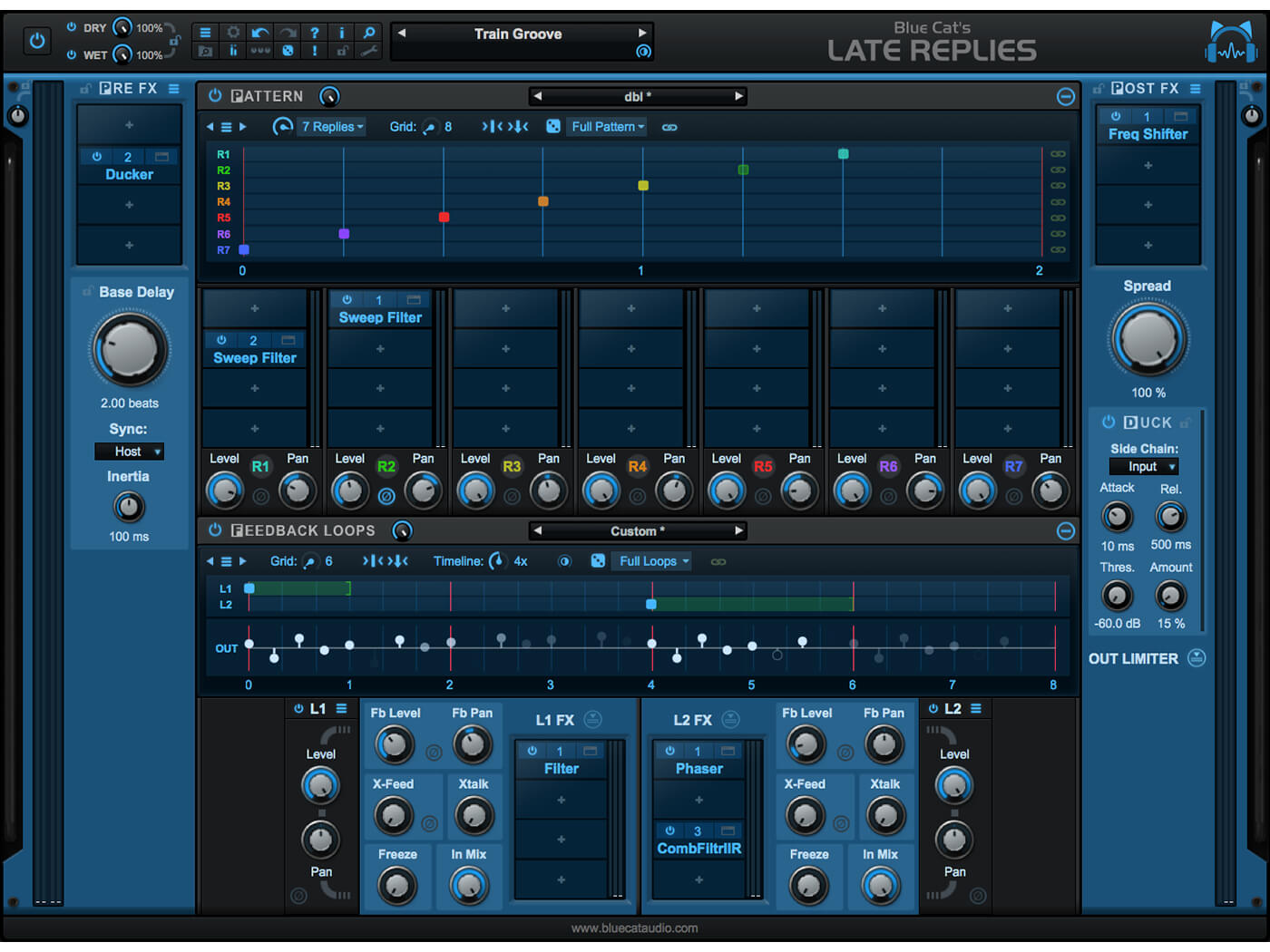
Up to eight replies can be enabled, each with its own independent volume, pan and phase. The position of each reply is set by clicking on the Pattern section’s timeline – this can display a grid, and replies can be locked to the grid or positioned freely. The amount of time represented by the Pattern timeline matches the Base delay time, with the replies stored as percentages of this Base time. This means that the internal timing of the delay pattern is independent of the Base delay time, which itself can be expressed as milliseconds or tempo/beats, or can be locked to the host DAW’s clock.
The Pattern section is followed by the Feedback section, which has two feedback loops running in parallel. Setting the pre-delay (the time before the loop’s first repeat) and delay time of a loop is also performed interactively on a timeline, although unlike the Pattern timeline, whose length is equal to the Base delay time, the Feedback timeline’s length can be set as multiples of the Base time. The rest of the Loop sections’s settings – feedback level, panning and so on, are presented as conventional knobs below the timeline. Here, too, you can cross-feed the signal between the two feedback loops, giving even greater complexity and variety to the delay patterns produced.
With so many different delay stages and parameters it would be exceptionally difficult to predict the delay patterns produced by any given setup, were it not for the ‘Out’ timeline, located below the Feedback Loops timelines. This visualises Late Replies’ output as a series of dots drawn on the timeline, with volume, pan and phase all represented by the appearance and vertical position of each dot. This is an exceptionally helpful tool that, coupled with the way the various markers drawn on the Pattern and Feedback timelines pulse when they trigger, massively assists with understanding what’s actually going on inside the processor.

Once through the Loops section, the signal is passed to the Output module. Here, you can control the overall stereo spread of the processor’s output and there’s also a built-in ducker that reduces the volume of the wet signal in response to the plug-in’s input signal; the ducker can also be keyed from an external sidechain, if desired. Finally, a brick-wall limiter is included which, given the potential for setting up infinitely repeating and loudening delay loops, is a vital addition.
To infinity and beyond
Late Replies’ main processing modules are relatively standard fare for a muti-tap delay, albeit with the addition of clever timeline visualisations that simplify setup and tweaking. But what really sets it apart is its ability to insert other effects and plug-ins at the input stage, on each reply, on both feedback loops and at the output stage. Each insert point can host up to four plug-ins and you can use any of the 30 processors that Blue Cat bundles, or any other VST, VST3 or AU plug-in that you have to-hand (AU plug-ins are only supported on Mac).
This plug-in support transforms Late Replies from a powerful, if conventional, multi-tap delay into a veritable multi-effects powerhouse and opens the floodgates on the plug-in’s creative potential. Adding filters and tape-saturation emulations to the feedback loops, for example, gives exceptionally authentic analogue and tape-delay effects, but that’s just the beginning: adding reverb to a single reply creates a burst of space in the delay pattern; using pitch and timing processors create weird and wonderful harmonisations and sci-fi effects; you can even insert other instances of Late Replies, into which you could, if you felt like it, insert yet another instance, and so on, ad infinitum!
This super-flexibility does come with downsides: not least being the ease with which you can create some startlingly complex effect stacks in which it’s easy to lose track of what’s what. Also, hosted effects can’t be directly automated and have to have any automation passed to them through one of 20 auxiliary control busses provided by the top-level Late Replies instance.
Personally, though, I’m happy to put up with these minor drawbacks, because the flexibility and sheer creative scope of the plug-in are so very high. Put simply, Late Replies is an awesome plug-in that goes way beyond mere delay processing.
Do I really need this?
Although delay processing lies at the heart of a number of different types of effect, it’s easy to see it as a rather boring and mundane effect. Sure, it sounds good when used in the right places and in the right ways, but with perfectly good examples coming bundled with every DAW is it really something that you need to spend your hard-earned on?
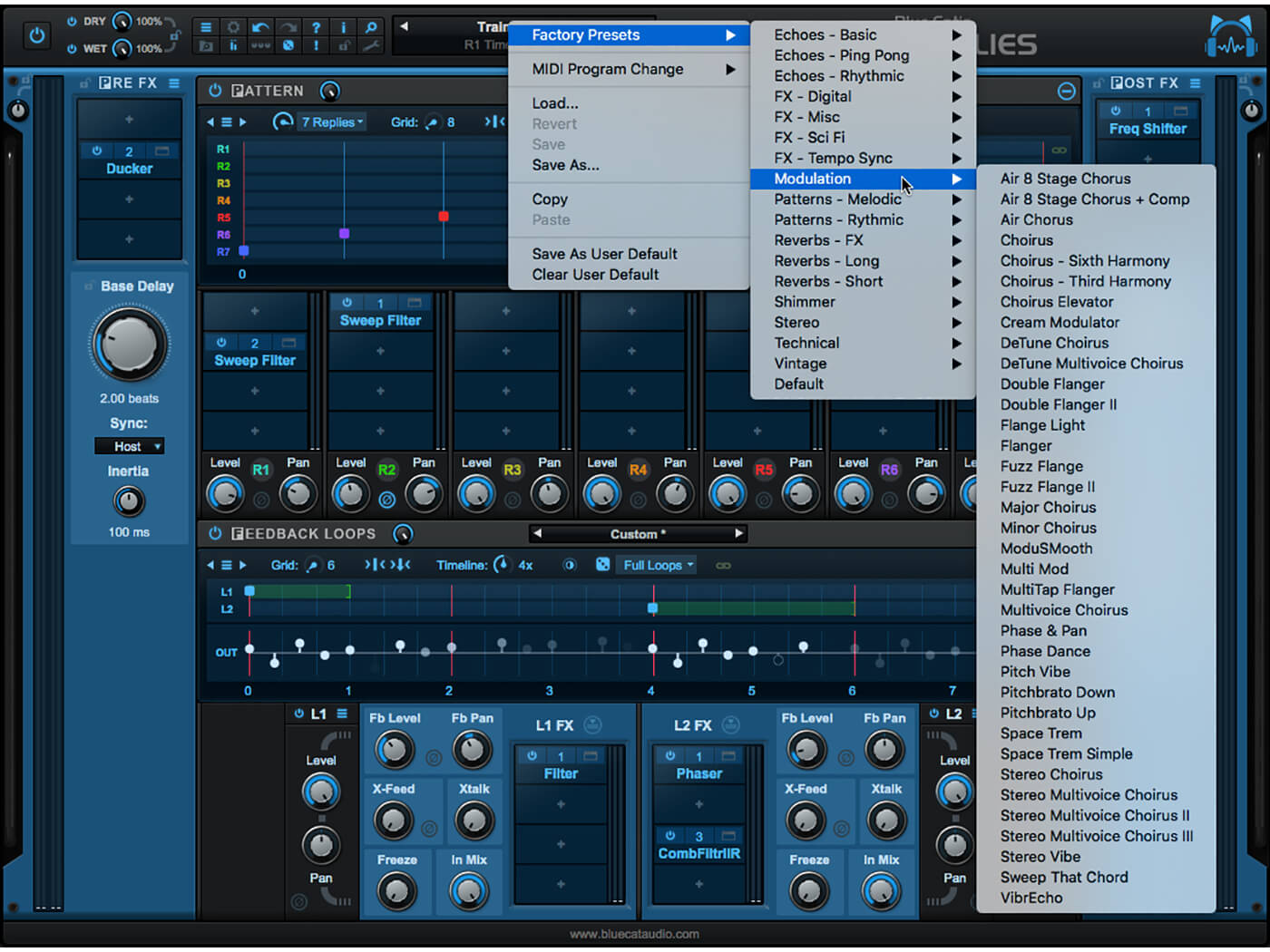
In the case of Late Replies, the answer is a resounding “yes”! It will happily provide for your basic delay requirements, while rising admirably to the challenge when you need something more advanced or complex. It will also function very happily as a multi-effects processor and with its 30 built-in plug-ins, offers exceptional value for money in this regard.
Key features
- Powerful multi-tap delay processor
- Insert additional plug-ins throughout signal chain
- Supports VST, VST3 and AU (Mac) plug-ins
- Pattern section featuring eight delay taps
- Feedback section with two parallel feedback loops
- Excellent user interface with intuitive editing and visualisations
- Built-in ducking, with external sidechain
- Built-in limiting to protect your speakers and ears
Alternatives
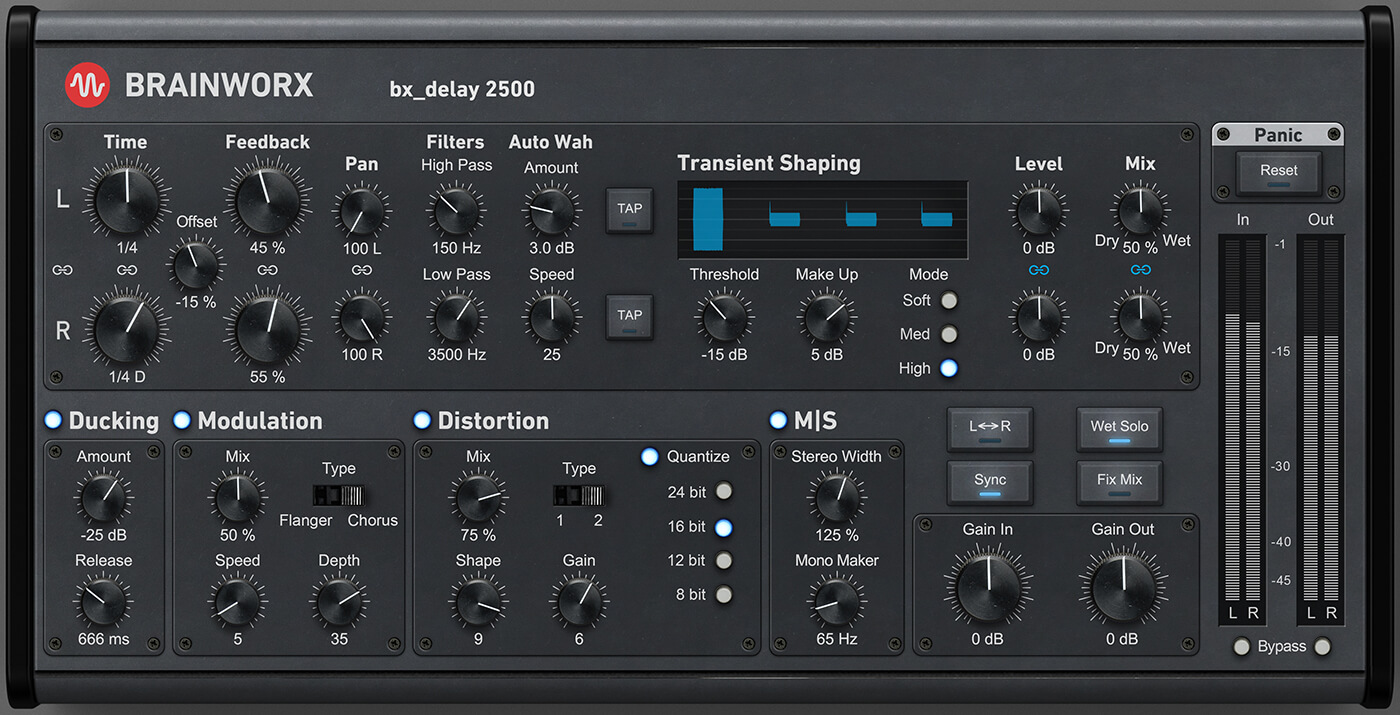
Brainworx
bx_delay 2500 $199/£160
Brainworx bx_delay 2500 is a powerful multi-tap delay processor with various built-in effects, including a mid/side stage that can adjust the width of the delay signal, or convert it to mono with no risk of phase problems. Its user interface is more conventional than Late Replies’, which some users may find preferable.
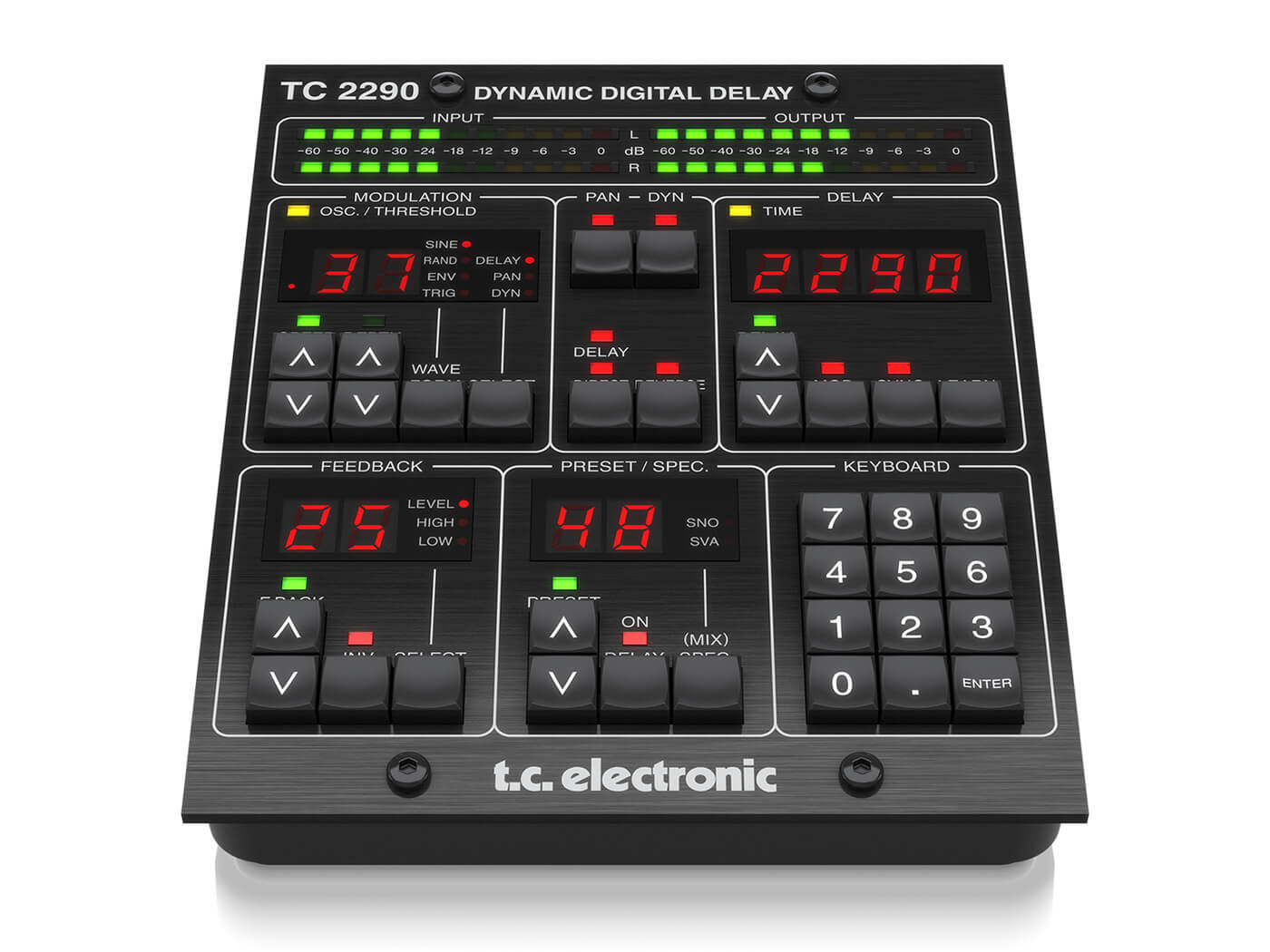
TC Electronic
TC Icons TC2290-DT circa £170
The TC Icons TC2290-DT is modelled directly on one of the most desirable and capable delay processors of the pre-DAW era. As well as providing a powerful and flexible delay processor, the TC2290-DT comes with a dedicated external controller that’s based on the original hardware’s control panel.